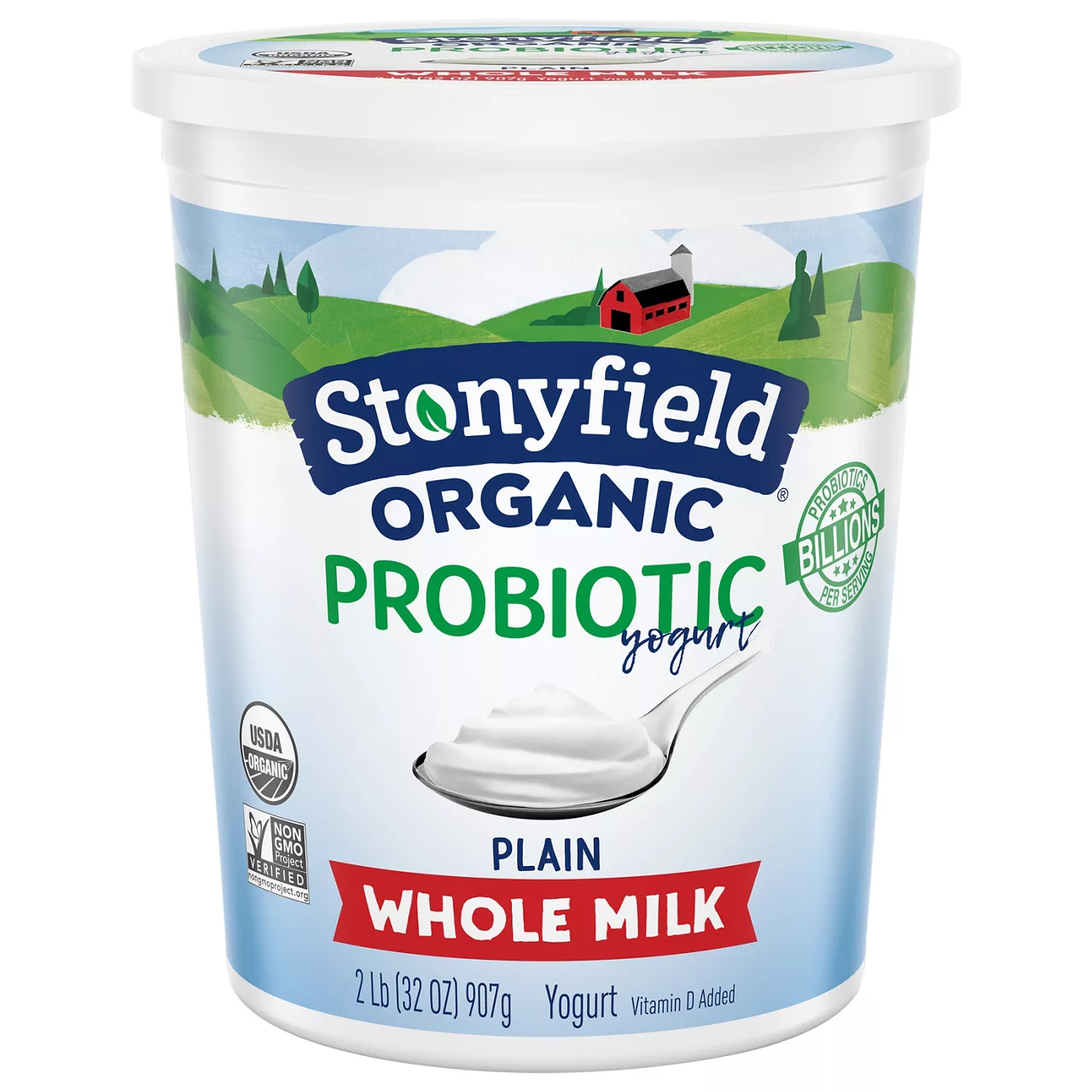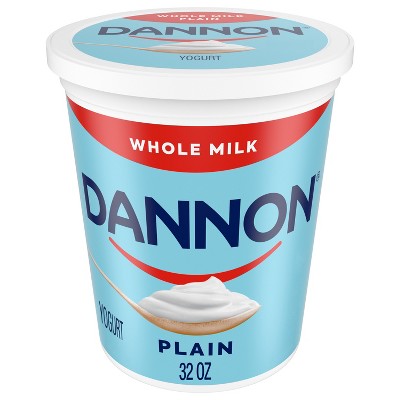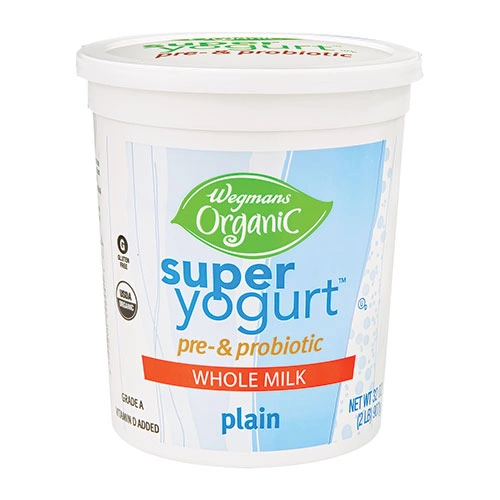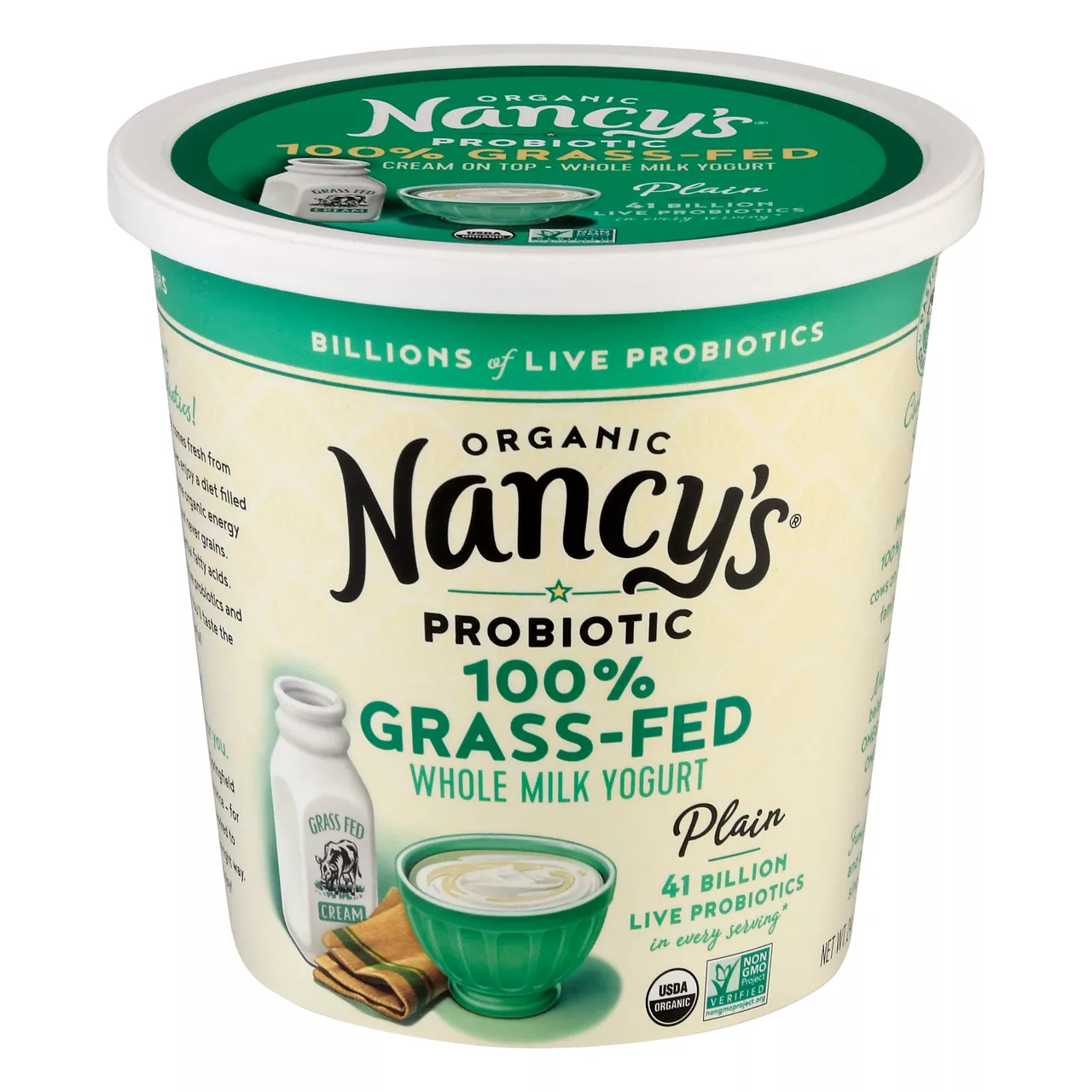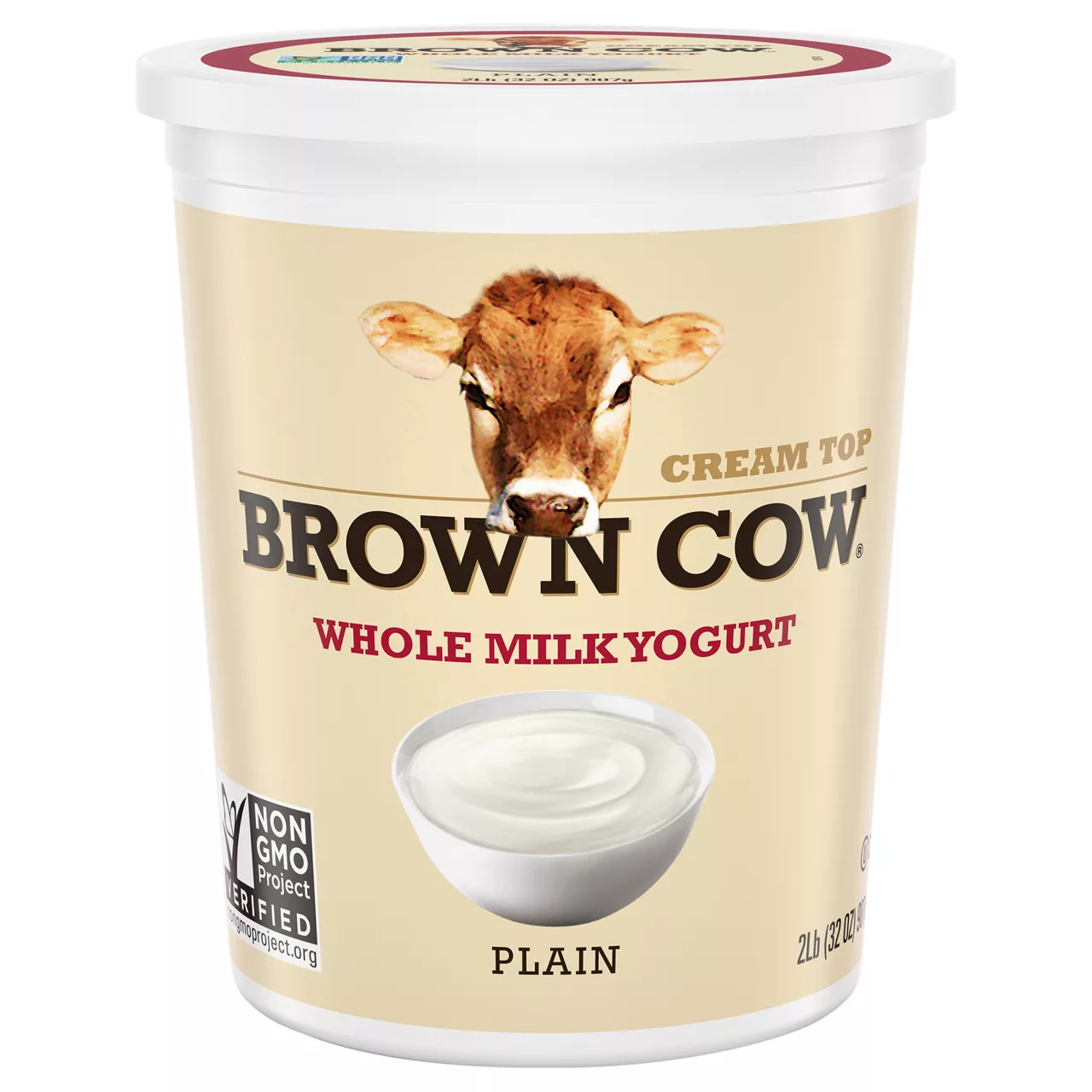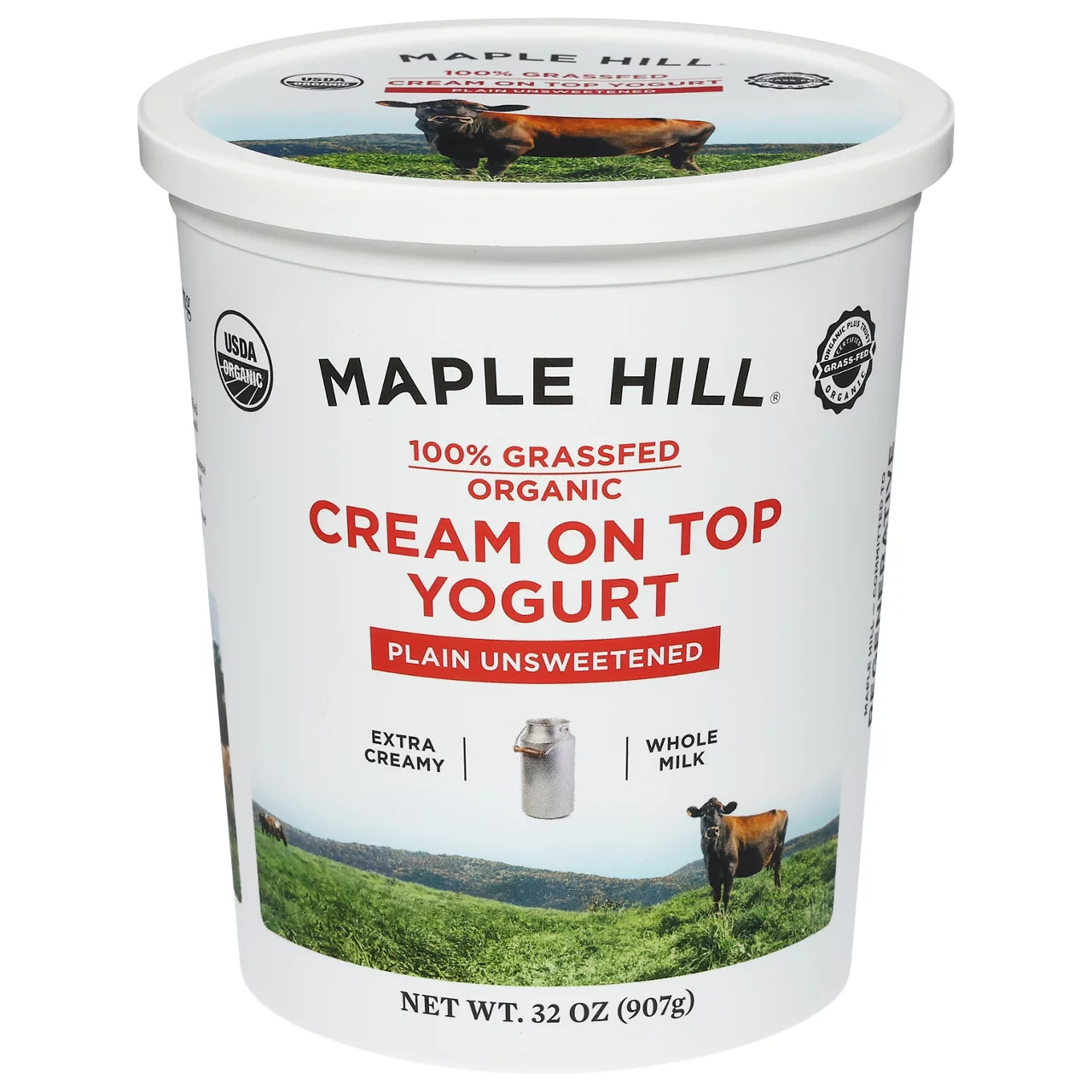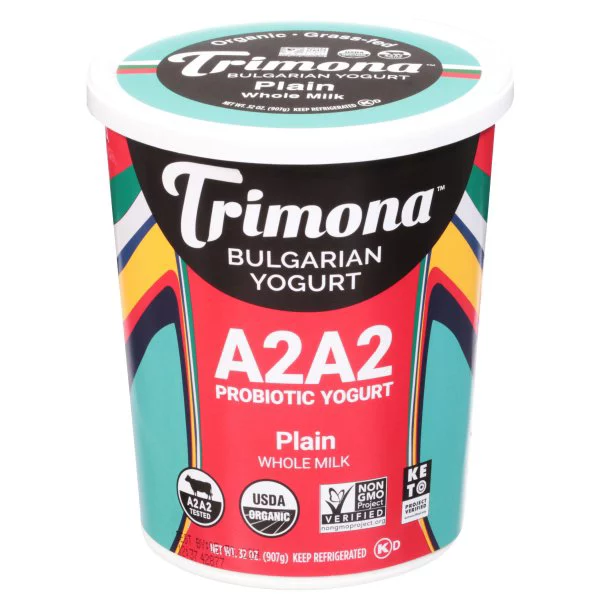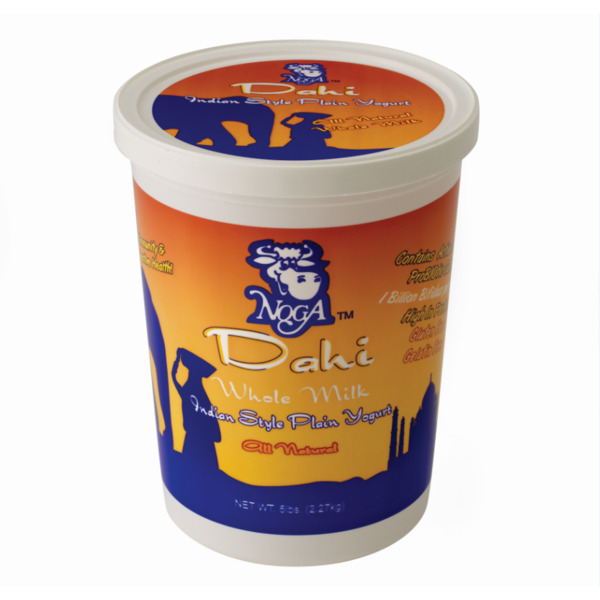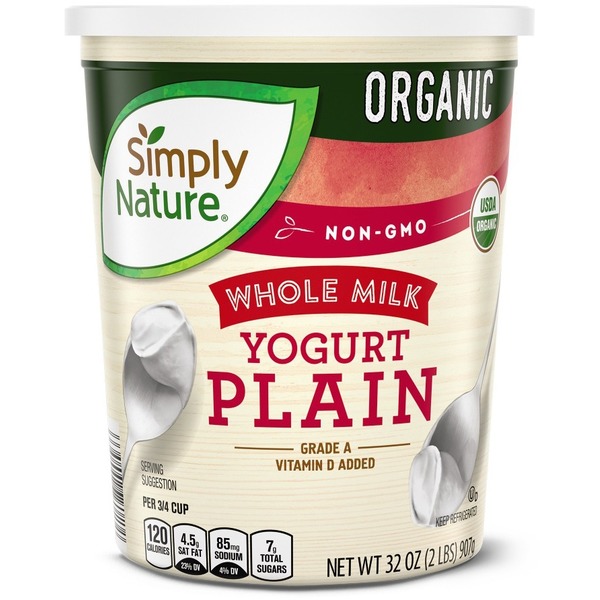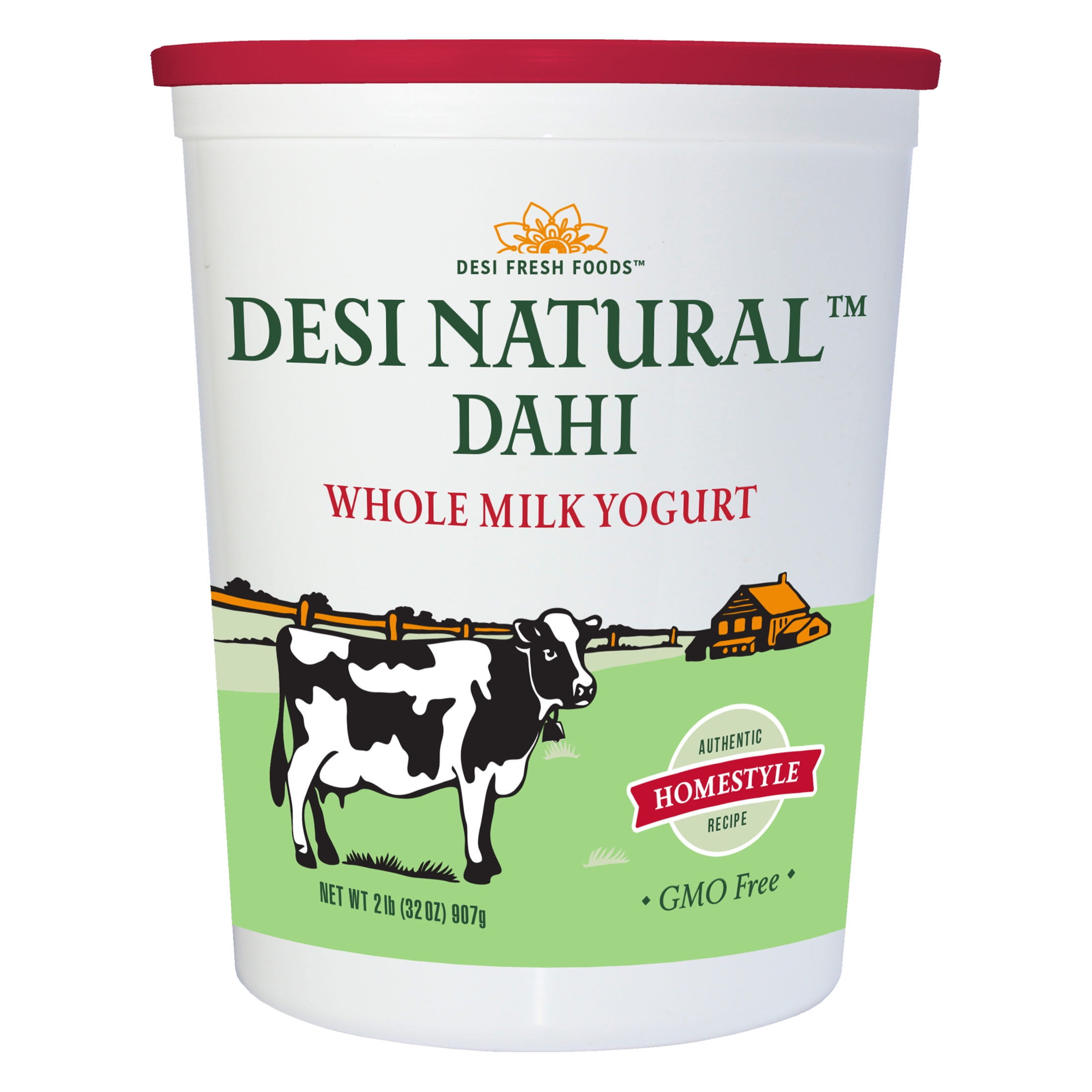Plain Yogurt
Plain yogurt is a versatile dairy product made by fermenting milk with live bacteria cultures. The process involves adding specific yogurt cultures (Lactobacillus bulgaricus and Streptococcus thermophilus) to milk, which then convert the lactose present in the milk into lactic acid. This reaction thickens the milk and gives it a creamy, tangy taste. Plain yogurt is the creamy full fat or whole milk variety.
This yogurt is a staple ingredient in many households due to its diverse culinary uses and health benefits. It can be consumed on its own or used in both sweet and savory dishes, such as smoothies, dips, and marinades. Being a probiotic-rich food, plain yogurt provides several health benefits such as improving digestion, boosting the immune system, and promoting a healthy gut.
41%
CARBS
29%
FAT
30%
PROTEIN
2,020 Plain Yogurt Products
Stonyfield Organic Whole Milk Probiotic Yogurt, Plain
Dannon Whole Milk Plain Yogurt
Wegmans Organic Super Yogurt Whole Milk Plain Pre- & Probiotic Yogurt
Nancys Probiotic Yogurt, Organic, Plain, Whole Milk, 100% Grass-Fed
Brown Cow Cream Top Whole Milk Yogurt, Plain
Maple Hill Creamery Organic Cream on Top Yogurt - USDA Organic Whole Milk Yogurt - Unsweetened No Sugar Added- 100% Certified Grass-Fed Yogurt, Plain
Trimona Bulgarian Yogurt, Plain, A2A2 Probiotic
Noga Dahi Indian Style Plain Yogurt
Simply Nature Organic Whole Milk Plain Yogurt
Desi Fresh Foods Desi Natural Yogurt, Whole Milk, Dahi
Used In 176 Recipes
1
Crisp Summer Waldorf Salad
5
Creamy Dill Cucumber Salad
1
Zesty Lime Pan-Fried Chickpeas
2
Scrumptious Potato-Stuffed Flatbread
5
Crispy Chicken Katsu Zoodle Ramen
3
Teriyaki Glazed Salmon & Veggie Medley with Creamy Cucumber Sauce
3
Scrumptious Coconut Lentil Curry
1
Citrus Burst Orange Cake
Plain Yogurt Is Frequently Used With
Plain Yogurt FAQ
Cooking with plain yogurt can be both exciting and challenging due to its unique flavor and consistency. Many people struggle to use yogurt in hot dishes like soups and sauces as it can curdle when exposed to high heat. To prevent this, they can temper the yogurt by gradually mixing a small amount of the hot liquid into the yogurt before adding it back into the hot dish. Diluting yogurt with water or milk can also prevent it from clumping up.
When used in baking, yogurt can contribute to a moist and tender texture in cakes and breads. People often wonder how much to use - a good rule of thumb is to substitute yogurt on a 1:1 basis for liquid ingredients like milk or water.
Unfortunately, plain yogurt is not always appreciated for its sour taste. However, this can be turned into an advantage when it is used as a marinade. The acidity helps tenderize the meat and the flavor creates a nice contrast that enhances the taste of the meat. To get the most out of plain yogurt, don't hesitate to experiment with it in different recipes.
Other secret hacks for using yogurt include using it to thicken soups instead of cream, creating a cream-style topping for desserts, and even as an effective skin and hair care ingredient.
Can I use yogurt instead of cream or milk in recipes?
Is it safe to eat yogurt that has separated or has water on top?
Why is my yogurt grainy?
Can I make my own flavored yogurt using plain yogurt?
Can yogurt replace eggs in baking?
Can I use yogurt as a hair and face mask?
Why does yogurt curdle when cooked and how can I prevent it?
How can I use yogurt in baking?
Why does yogurt taste sour?
Can I use yogurt to marinate meat?
Expiration & Storage Tips
When does plain yogurt expire?
Unopened plain yogurt can last up to 2 weeks past its printed expiry date as long as it is kept in the refrigerator and the seal remains intact. Once opened, the yogurt should ideally be used within 3-5 days, although it can technically last a bit longer, around 1-2 weeks, in the fridge. However, this largely depends on a few factors like how clean the used utensils were and how often the container was opened. As for freezing, yogurt can safely be frozen for 1-2 months, but do note that the texture may change upon thawing, so it's best used in cooking rather than eating directly.
How do you tell if plain yogurt is bad?
Even if you're a beginner in the kitchen, it's simple to tell if plain yogurt has gone bad. Look for signs of mold or odd discolorations - these are telltale signs that it is no longer safe to consume. The smell of the yogurt can also indicate spoilage - if it smells sour or off in any way, it's best to throw it out. Yogurt that has gone bad may also appear to be more watery or curdled than usual.
Tips for storing plain yogurt to extend shelf life
• Store yogurt in the refrigerator, maintaining a temperature of between 35-40°F to keep it fresh.
• Once opened, make sure the container is resealed tightly after every use to restrict air exposure which can speed up spoilage.
• Use clean utensils when serving or scooping out yogurt to prevent introducing bacteria to the rest of the container.
• If you've bought in bulk or aren't going to consume it quickly, you can freeze yogurt, just be prepared for a change in texture upon thawing. It's advisable to portion it out before freezing.
• Full-fat and low-fat yogurts tend to last longer than non-fat yogurts, due to higher oil content that acts as a natural preservative.
EXPIRES WITHIN
2 - 6
WEEKS
Substitutes

Lowfat Plain Greek Yogurt

Plain Greek Yogurt

Nonfat Plain Greek Yogurt

Plain Vegan Yogurt

Unsweetened Plain Almond Milk Yogurt
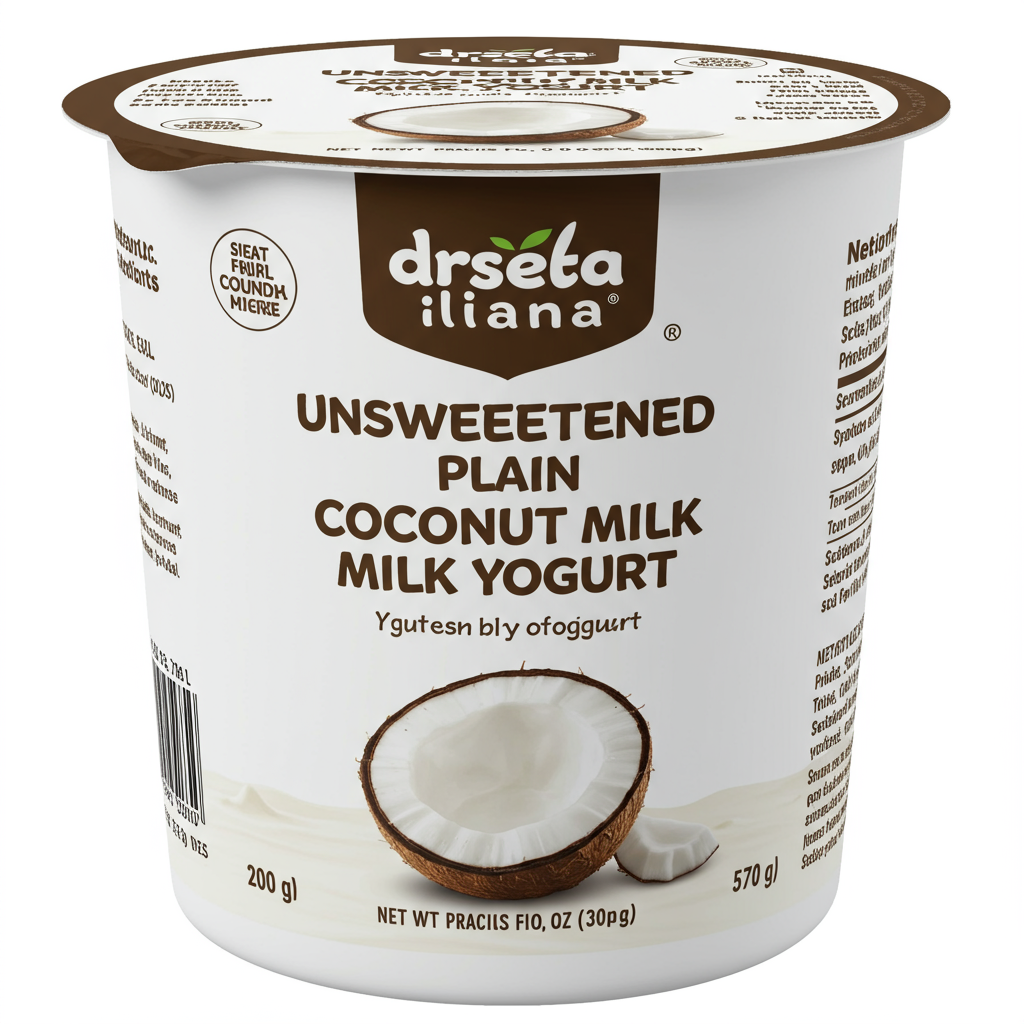
Unsweetened Plain Coconut Milk Yogurt

Plain Skyr Yogurt

Plain Almond Milk Yogurt

Plain Coconut Milk Yogurt

Plain Oat Milk Yogurt
See All
Health Info
Macros
11g
CARBS
7g
FAT
8g
PROTEIN
Allowed on these diets
LOW FAT
HIGH CALCIUM
VEGETARIAN
KETO
MEDITERRANEAN
LOW CARB
GLUTEN FREE
Contains these allergens
MILK

